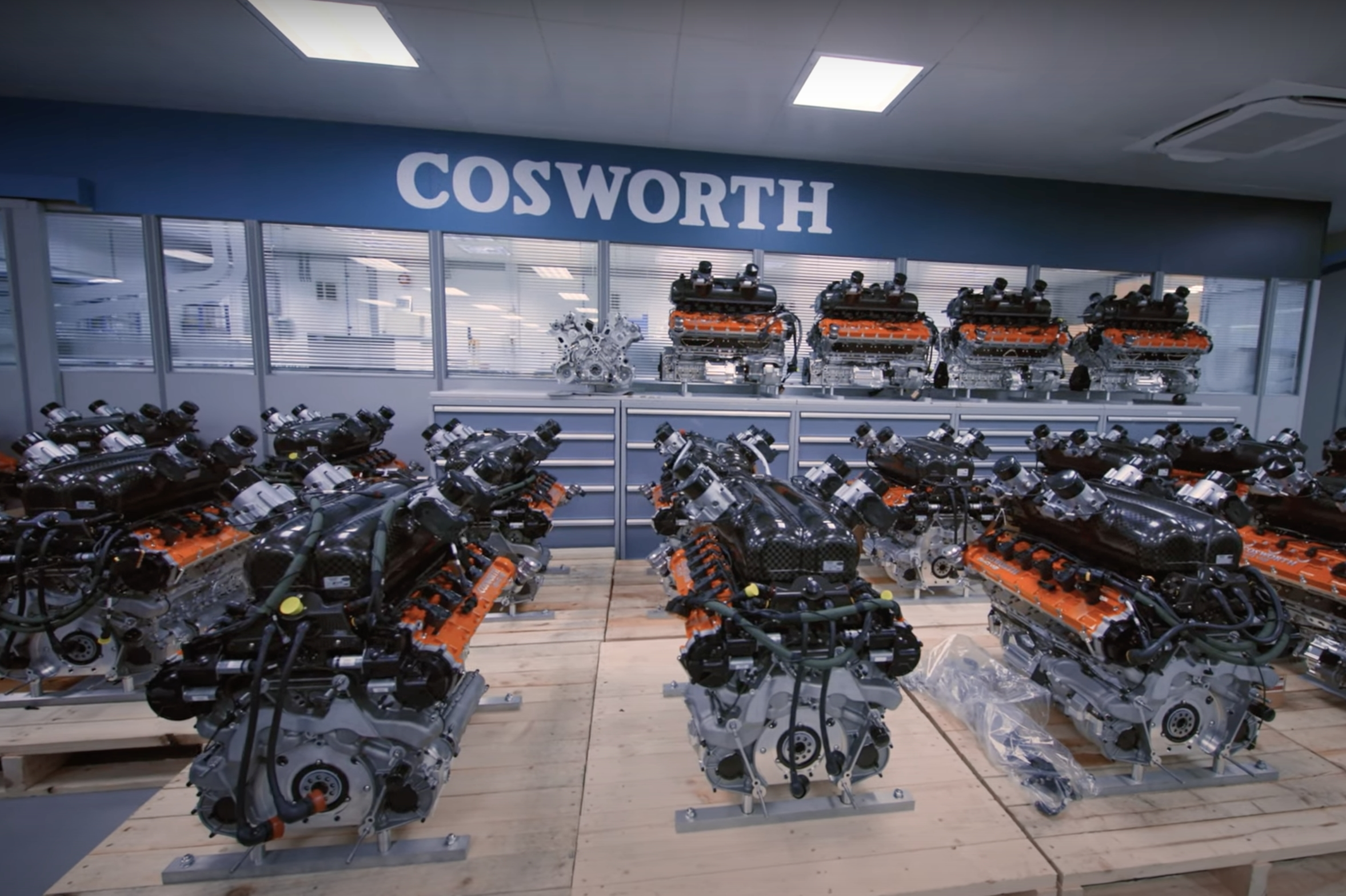
UPDATE: 03/15/2023 - Gordon Murray Automotive has subsequently announced a final output of 656 hp (665 PS) in production form.
Gordon Murray Automotive (GMA) has released a video in which Gordon Murray, his mustache, and test driver Dario Franchitti explore the production and design of the insanely well-engineered Cosworth engine V12 that powers the GMA T.50 supercar, revealing that it now has even more horsepower than projected initially at 670 hp.
"I just can't see anybody surpassing a V12 in this day and age when we're all switching over to electrics and hybrids," says Murray early on. "It's got a good chance that this will remain the best V12 ever."
And he's right. It's the lightest and highest revving V12 likely to ever be built, and even Cosworth describes the engine as being its pinnacle. And Cosworth has built awe-inspiring engines for Formula 1 for decades, so it knows its stuff.
If Murray and his gentlemanly mustache are looking for a legacy, he's likely going to get it. History will probably remember it as the last and greatest V12 built, although not many people will get to drive a car powered by it. Each engine is handbuilt by a single person, taking around 140 hours to complete, and only 100 of the regular T.50 will be made. Of course, you can always get a T.50s - the track-only version - or the GMA T.33 - which will be the only model sold in the USA. But that all hinges on you already having an allocation, as GMA's website proudly proclaims that all cars are spoken for.
Through the video, Murray and Franchitti explore each section of the engine build, starting with the block and the camshaft. It's clear how impressed Murray is with the engine and each of its components, and talks about how it surpasses his expectations, which were high in the first place.
Murray set out his expectations to Cosworth for the highest-revving engine ever made for a production car with a power-to-weight ratio that couldn't be rivaled. That meant the engine needed to be light, meaning it needed to start with a low displacement and carry on from there. That includes the camshaft Murray shows off, made of a high-strength aluminum alloy and weighing just 28 pounds.
The end package weighs only 392 pounds and revs out to a maximum of 12,100 rpm. But the important thing is that Cosworth exceeded the projected outputs. Whereas power was originally claimed at 650 PS, Murray says it now produces in the region of 670 PS - that's 661 American horsepower, up from 641 before. And what a sound it makes.
A lot of that noise is thanks to the ram air intake over the driver's head, but much can be attributed to four throttle bodies feeding into a dual-skinned carbon fiber intake plenum that Murray says settles the air and makes the motor much smoother and more easily tunable than the BMW V12 that powered the McLaren F1. That motor had individual throttle bodies (ITBs) on each cylinder and was prone to hunting at low revs as a result, but the system employed on the T.50's motor makes it much, much smoother and more usable.
He praises the torque curve and how the bulk of the torque comes in at a couple of thousand rpm. That's partially thanks to the VVT system, which is hydraulic in nature and developed specifically for this engine.
At the end of the video, we see a room full of 23 V12 engines, all destined for customer cars, with Gordon confirming the first customer chassis arriving a week after the video was filmed. That means it's not long now before the GMA T.50 finally hits the road.

